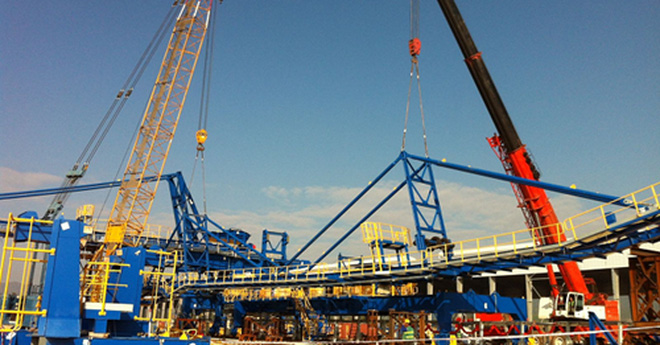|
What does the $2.7 billion trade surplus mean?
Analysts were cautious about the trade
surplus of VND2.7 billion in 2016, saying that the figure did not show the
entire picture of the national economy.

It is still necessary to say who exported products and
what they exported, they said.
The General Statistics Office (GSO) has released a
report saying that Vietnam exported more than imported by $2.68 billion in
2016. Th country saw a trade surplus again after one year of trade deficit.
In 2015, the trade deficit was over $3 billion.
A trade surplus is always good news for Vietnam economy
as it means that the country gets more money than it spends and there is no
need to worry about foreign currency supplies.
In previous years, Vietnam usually imported more than
it exported. As a developing economy, it needed to import machines and input
materials in large quantities to run domestic production. Therefore, a trade
surplus was always hailed as a great achievement.
However, Bui Trinh, a renowned economist, is cautious
when talking about this year’s trade surplus as he still sees problems.
First, statistics show that foreign invested
enterprises (FIEs) made up 70 percent of total export turnover, while exports
from Vietnamese enterprises were modest.
The export items were mostly telephones and phone
parts, computers, electronics & electronic parts, and textile and
garments, worth tens of billions of dollars.
“The exports were mainly products made by FIEs and
products in labor-intensive industries which had low added value,” he
commented.
Trinh went on to say that Vietnam exported manufacturing
products ‘on behalf’ of other countries.
Pham Tat Thang, a senior researcher from the Ministry
of Industry and Trade (MOIT), agrees that Vietnam’s export has been heavily
relying on FIEs and on some certain export items.
The export of mobile phones alone, for example, in the
first 11 months of 2016 reached $38 billion.
Thang does not think the export in 2017 would make a
breakthrough, predicting that the export growth rate would be around 7
percent.
However, Trinh said there were still positive signs in Vietnam’s
import/export picture in 2016.
These include a sharp increase in exports of farm
produce and seafood, except rice, while the export of raw natural resources
decreased.
When asked about the impact of Brexit on Vietnam-UK
trade, GSO’s head Nguyen Bich Lam said in the EU, the UK is Vietnam’s third
biggest export country, after Germany and the Netherlands, which account for
13-15 percent of total export turnover to the EU.
In terms of imports, the UK is the fourth largest
partner, after Germany, France and Italy, accounting for 7 percent of
Vietnam’s import turnover from the EU.
As such the UK only makes up 3 percent of Vietnam’s
export turnover and 0.4 percent of import turnover.
Thanh Mai, VNN
|
Chủ Nhật, 15 tháng 1, 2017
Đăng ký:
Đăng Nhận xét (Atom)
Không có nhận xét nào:
Đăng nhận xét